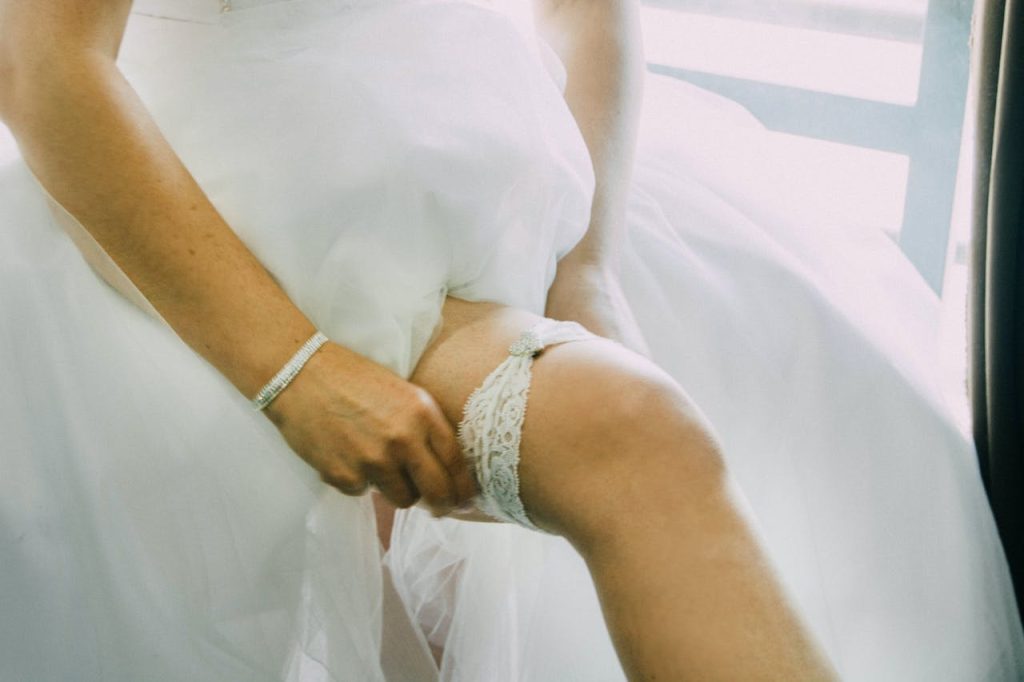The bridal garter, a small yet significant accessory in the world of weddings, has a rich history steeped in tradition and symbolism. From its mysterious origins to the modern-day significance, let’s look at the journey of the bridal garter, delving into its beginnings, the reasons behind its inclusion in weddings, and the traditions associated with this intimate garment.

The Origins
The history of the bridal garter dates back centuries, with its origins shrouded in mystery. One theory suggests that the garter tradition began in medieval Europe, where it was believed to bring good luck and fertility to the newlyweds. During this era, it was customary for guests to accompany the couple to their bridal chamber, and the garter served as proof of consummation.
Another popular origin story ties the garter to the 14th-century English court. Legend has it that during a dance, a garter slipped from the leg of a noblewoman, prompting King Edward III to retrieve it and proclaim, “Honi soit qui mal y pense” (shame on him who thinks evil of it). This phrase later became associated with the Order of the Garter, one of England’s oldest and most prestigious chivalric orders.
The Symbolism
As time progressed, the bridal garter evolved beyond its initial symbolic purpose. Today, it represents a playful and romantic gesture, embodying the transition from the bride’s single life to her married one. It is often seen as a token of the bride’s femininity and sensuality, symbolizing the removal of the garter by the groom as a gesture of intimacy and the consummation of their union.

Choosing the Perfect Garter
Selecting the right bridal garter is a personal choice that often aligns with the overall theme and style of the wedding. A noteworthy trend emerging in recent years involves brides using offcuts of their wedding dress material to create the garter. This sustainable approach not only adds a personal touch to the accessory but also minimises waste. Brides can repurpose fabric offcuts into a unique and meaningful garter, aligning with their commitment to eco-friendly choices.
Some brides choose to incorporate “something old, something new, something borrowed, something blue” into their garter. This tradition, rooted in superstition, is a charming way to infuse personal meaning into the accessory. Brides may use a piece of family heirloom lace, incorporate a new charm, borrow a small token from a friend, and choose blue as the accent colour.
Garter Toss Tradition
One enduring tradition associated with the bridal garter is the garter toss. Towards the end of the reception, the groom removes the garter from his bride’s leg, often with a touch of humour, before tossing it to a group of single male guests. Similar to the bouquet toss for the ladies, catching the garter is believed to bring good luck and, in some instances, suggests that the recipient will be the next to marry.
The bridal garter has come a long way from its mysterious medieval origins to become a cherished and symbolic element of weddings. While its significance has evolved over the centuries, the garter remains a romantic and playful tradition, weaving its way into the fabric of wedding ceremonies across cultures and continents. Whether chosen for its historical symbolism, sentimental value, or as a fashionable accessory, the bridal garter continues to add a touch of charm and tradition to the celebration of love.
